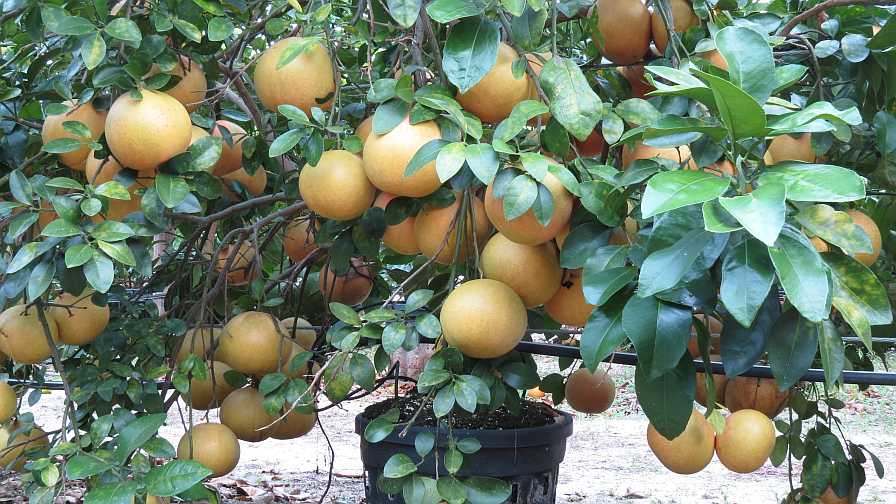Why Growing Grapefruit Under Cover is Gaining Appeal

Besides helping keep the Asian citrus psyllid on the outside looking in, studies show growing grapefruit under protective screen can have a positive impact on output.
Photo by Arnold Schumann

Florida’s grapefruit crop has been shrinking at an alarming rate due to outside pressures — mainly the devastation of citrus greening disease. Concerned industry stakeholders are now looking for an inside track (literally) to restore the signature crop to respectable yields. Local researchers have been growing grapefruit under protective screens for several years, and they’re seeing encouraging results.
UF/IFAS scientists, plus a few commercial growers, have employed the citrus under protective screen (CUPS) system in an effort to keep the Asian citrus psyllid (greening’s vector) at bay. The protected agriculture pest exclusion method has proved effective so far. In addition, they’re noticing higher grapefruit yields.
One reason for the enhanced yield is the grapefruit’s ability to adapt to the higher daytime temperatures under the protective covers, according to Arnold Schumann, a UF/IFAS soil and water sciences Professor, who leads the CUPS experiment at the Citrus Research and Education Center in Lake Alfred.
Other reasons for the increased production include:
- High-density planting
- A hydroponic system with trees growing in pots, instead of soil and inducing early, large blooms
- Drip fertigation applied several times a day
Four years of data show grapefruit that exhibit no signs of greening. Researchers planted ‘Ray Ruby’ grapefruit trees in August 2014. By December 2018, the trees had produced at total of 2,100 boxes of grapefruit per acre. That’s 525 boxes per acre per year on average, but Schumann noted trees are less productive in the initial two years after planting. In years three and four, the CUPS grapefruit yields were 797 and 892 boxes per acre, respectively. Currently, the average yield for Florida grapefruit is about 166 boxes per acre per year, according to the USDA.
Florida’s grapefruit production free-fall has gone from 40.8 million boxes in the 2003-2004 season (greening was confirmed in the state in 2005) to estimated 4.9 million boxes in USDA’s latest forecast.
Scientists are not yet recommending the intensive production system used at the CREC experiment for commercial CUPS, although one grower in Hardee County is already experimenting with hydroponics and container-grown grapefruits, tangerines, and navels under cover, Schumann confirmed.
“Our aim is to maximize fruit production and quality in commercial CUPS with trees grown in the ground at moderately high-planting densities,” he stated. “We want to document the most successful methods in a CUPS production guide and to update it as we learn more.”









